We did a straight shot down I-95 through Virginia on our way south, primarily stopping in Fredericksburg and Richmond. Here are some items we thought were interesting along the way.

The Markel Building was supposedly inspired by a foil-wrapped baked potato served to designer Haigh Jamgochian while attending an American Institute of Architects’ dinner.
Each floor consists of a single piece of 555-foot aluminum, the longest unbroken pieces of aluminum ever used as siding material.
In 2009, Digital Journal declared it to be one of “The World’s 10 Ugliest Buildings”. Jamgochian only ever had one building constructed

The Grand Kugel at the Science Museum of Virginia is a floating fountain, so to speak. The original Kugel was 86 tons, and the sphere sits in a fitted hollow in a pedestal; pressurized water flows between the sphere and socket, which makes it nearly frictionless, so you can push the ball by exerting a little effort.
A crack developed in the first ball, so this is actually a replacement Grand Kugel.
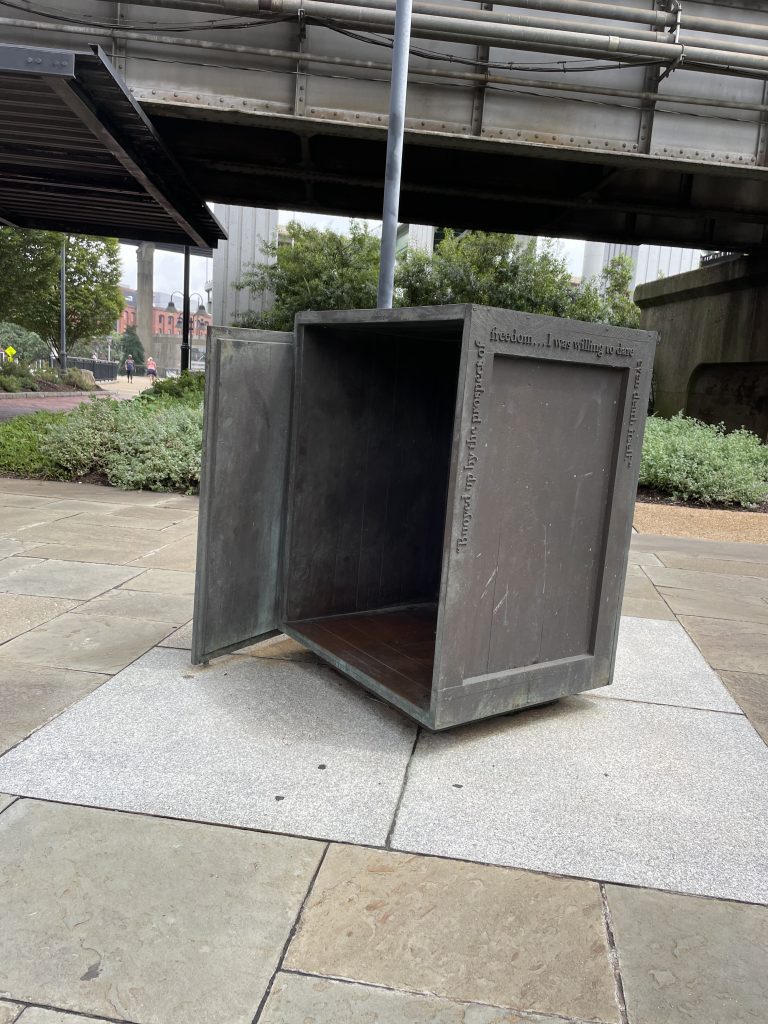
Henry Brown, an enslaved person in Richmond, resolved to escape to freedom after his wife and three children were sold to another family in 1848.
He had himself boxed up in a crate about 2 x 3 feet, and shipped 27 hours to Philadelphia, where freedom awaited. This sculpture memorializes Brown’s journey in an interactive installation where you can try his mode of transport for yourself, ever so briefly. It’s hard to imagine being in that position for so long, not to mention being tossed every which way and hardly being able to breathe.
Later, for obvious reasons, he was known as “Box” Brown.
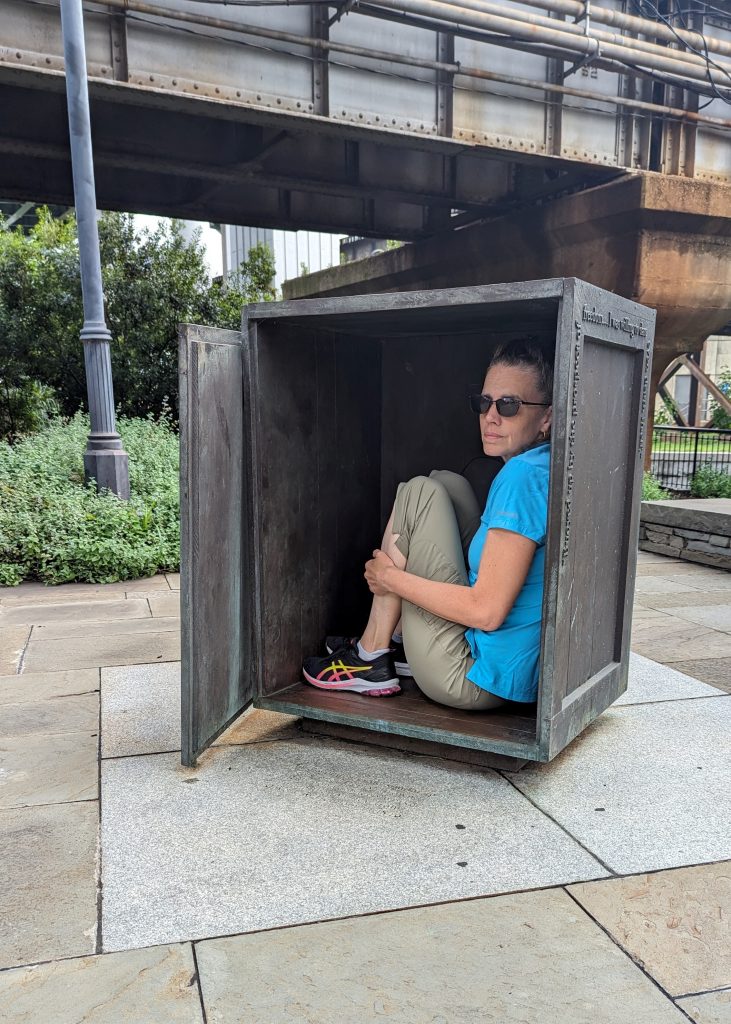
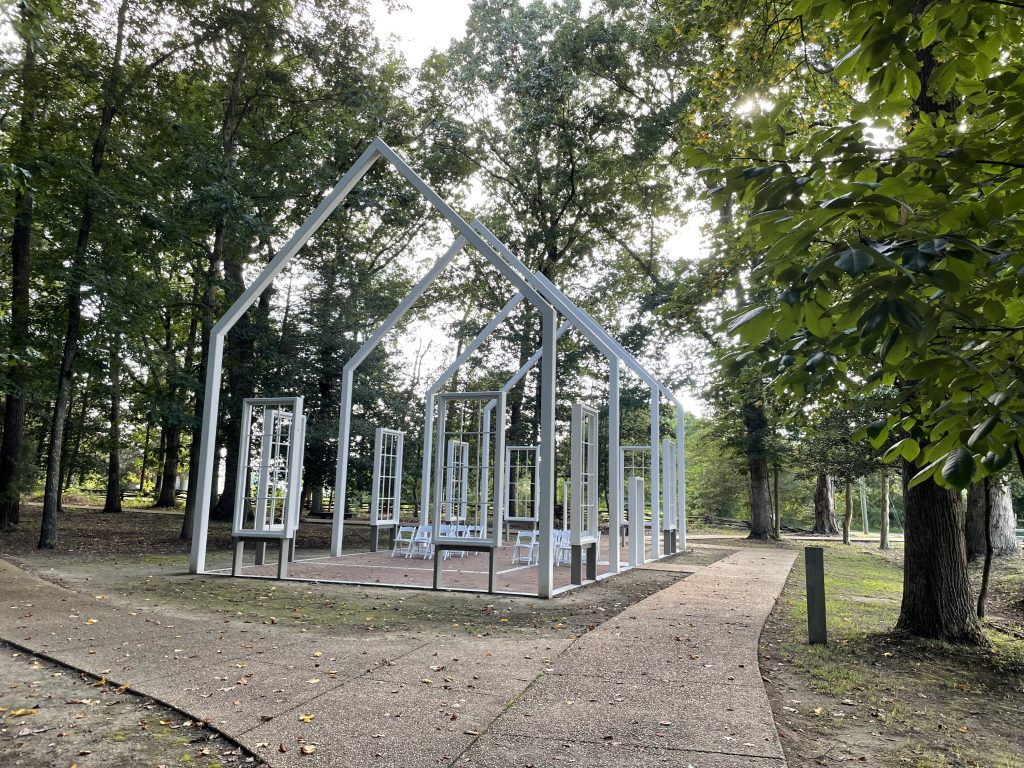
Between 1747 and 1759 Reverend Samuel Davis fought for religious freedom from the Historic Polegreen Church, as only the Anglican Church was recognized at the time; this was known as the “Great Awakening”.
Interestingly, Patrick Henry (he of “give me liberty or give me death” fame) attended as a young man with his parents, and credited the reverend with teaching him how to be a great orator.
It is also now known as “The Ghost Church” due to the white steel beams showing the outline of what had been.
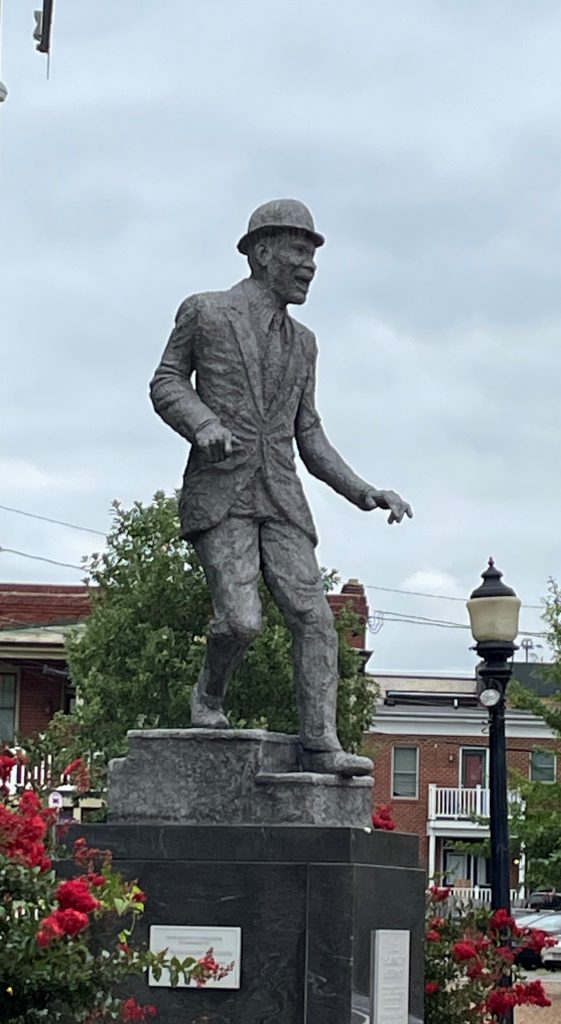
Bill “Bojangles “ Robinson was an American entertainer who was born in Richmond, Va. He was the most highly paid African-American entertainer in the United States during the first half of the 20th century. You may remember him dancing with Shirley Temple in her films.
As far as I can find, this Uneeda wall is just vintage advertising that has stood the test of time. When I googled it, I found an interesting site calling signs like this a “Ghost Sign”.
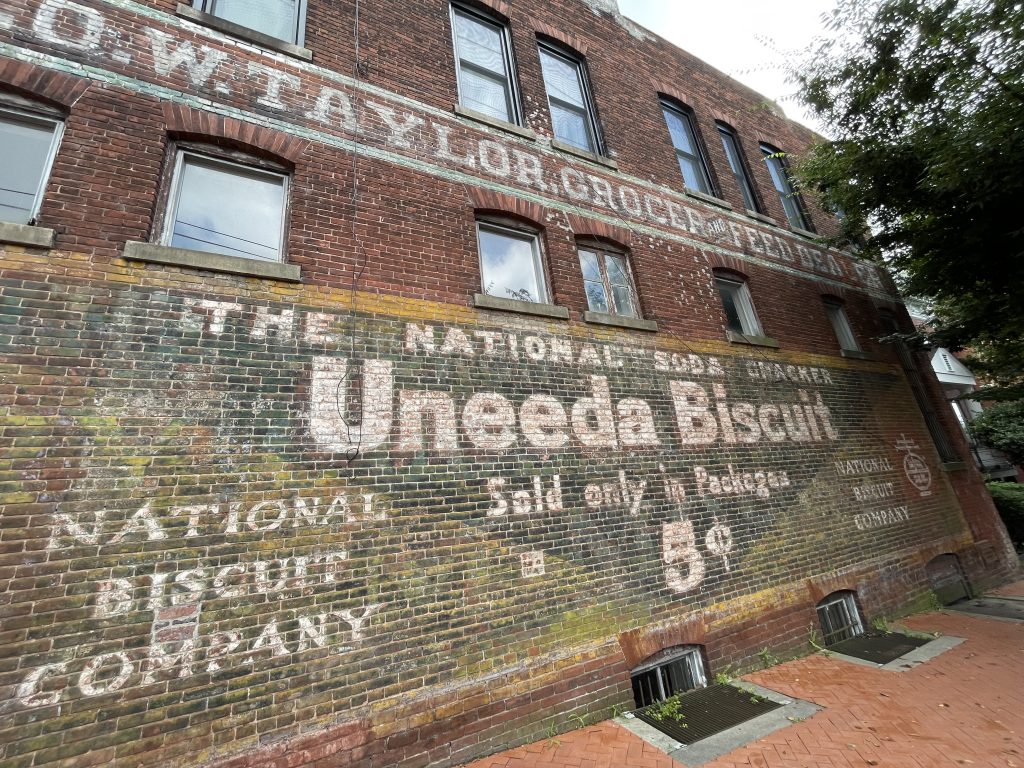
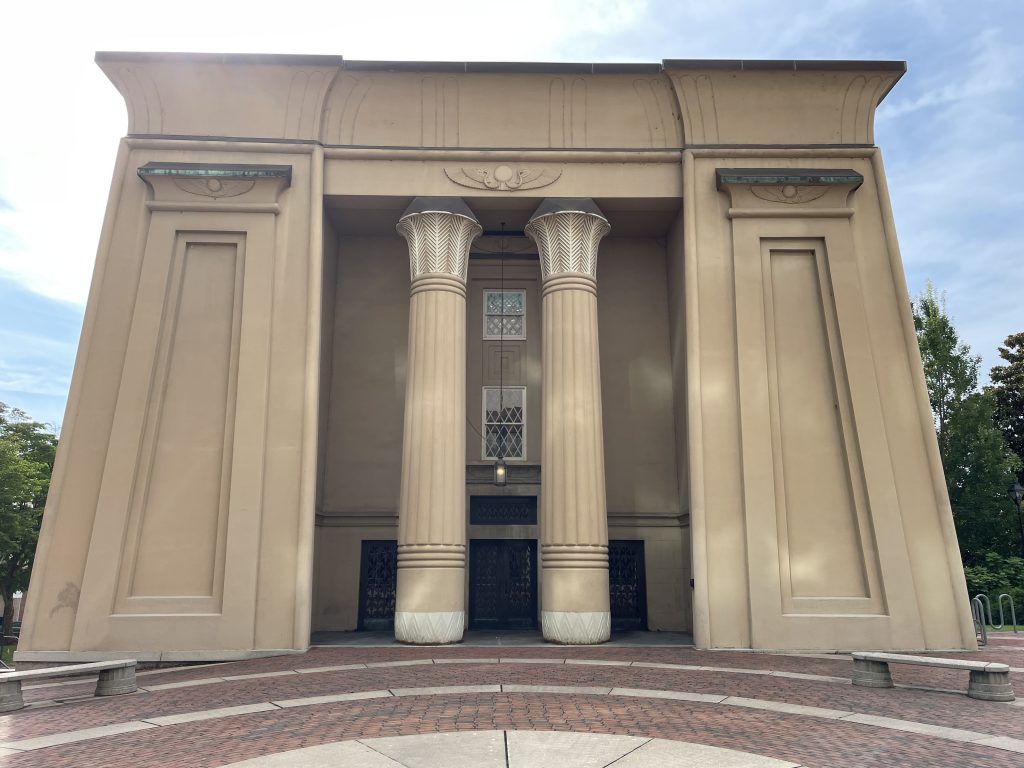

The Virginia Civil Rights Memorial at the state capitol commemorates the moment when 16-year-old Barbara Johns led a student walk-out to protest the terrible conditions at her segregated high school in 1951.
The monument sides show the walkout (pictured here), legal and religious leaders who supported the cause, and a group of individuals of various races walking together into the future (the cover photo for this post).
We both thought it was a really well-done monument.

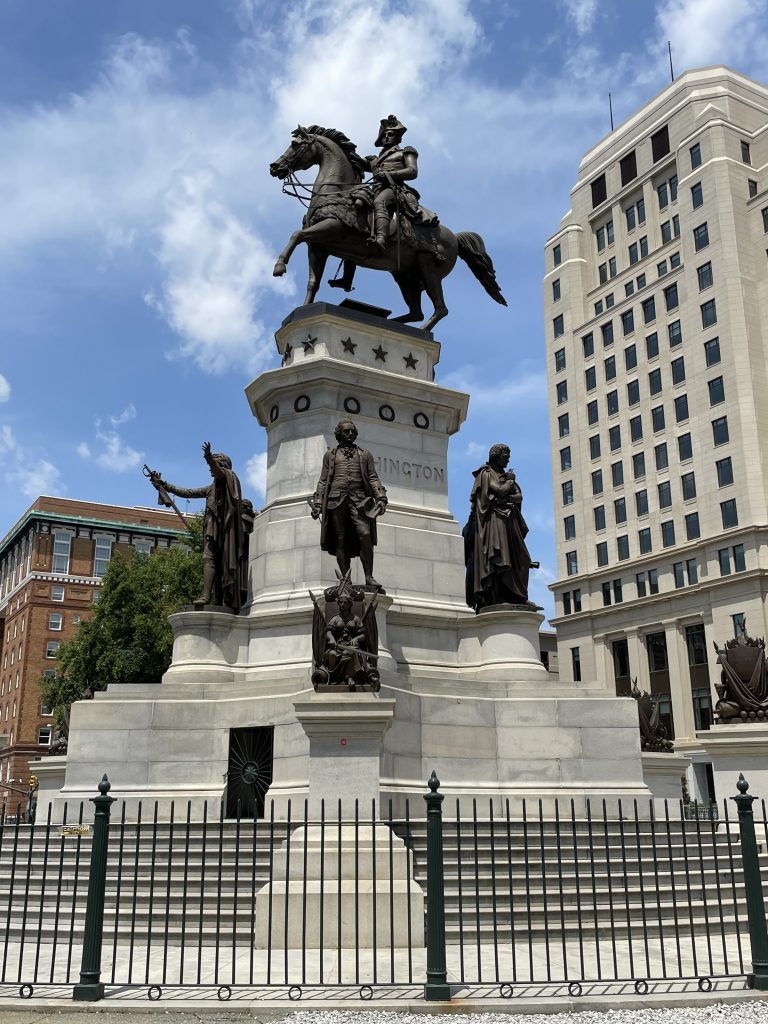
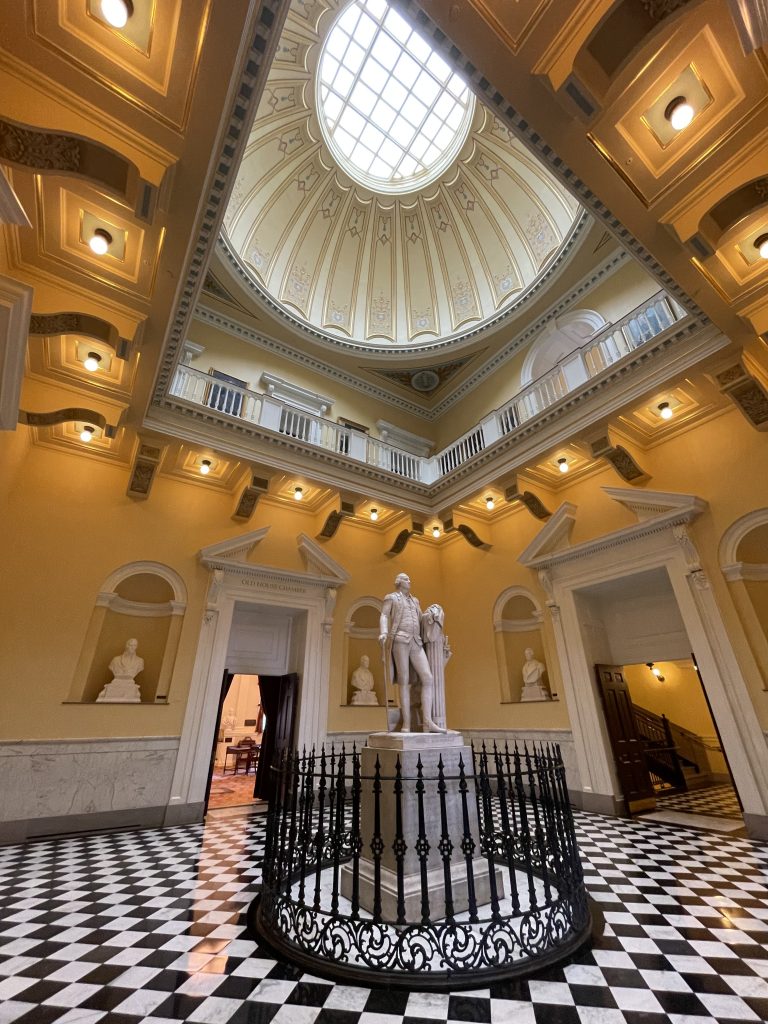
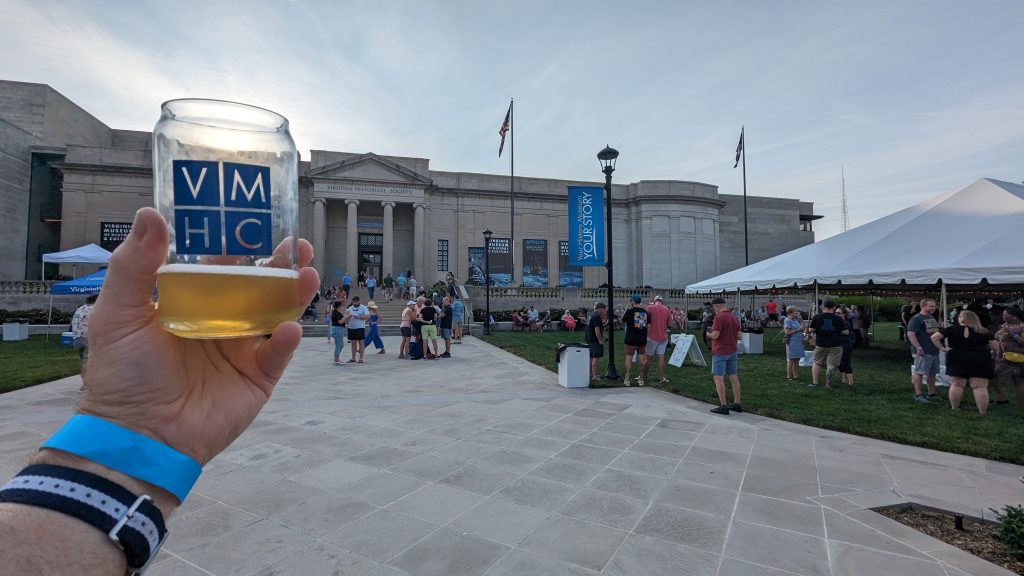

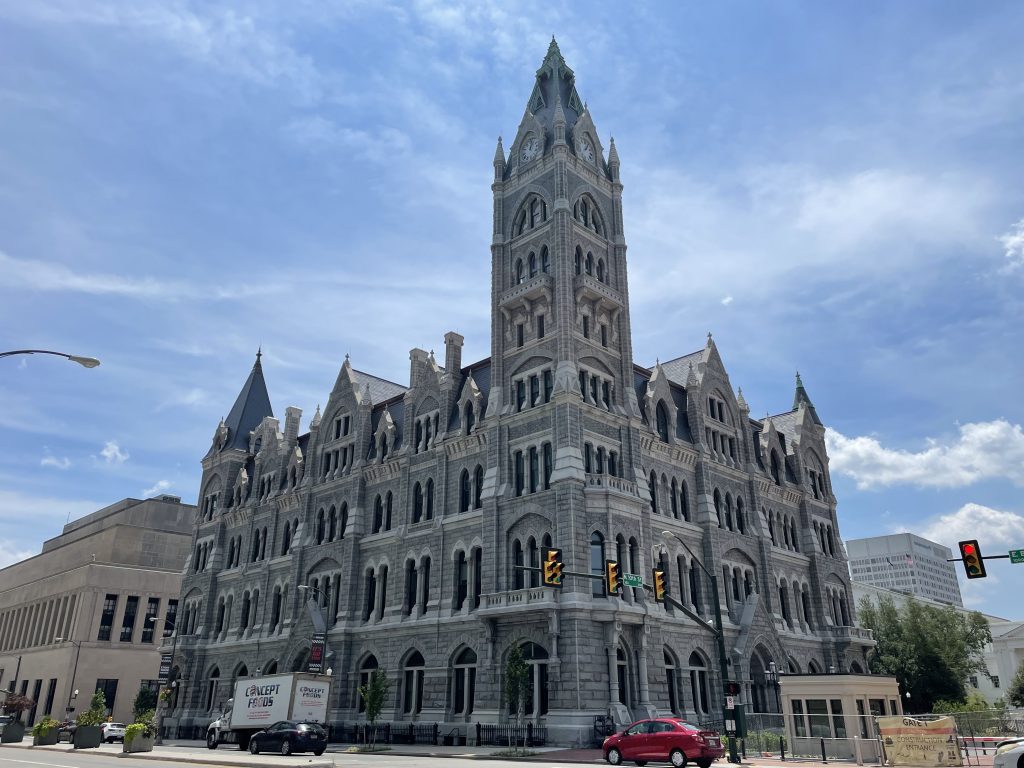





One thought on “Various Sites in Richmond and Eastern Virginia”